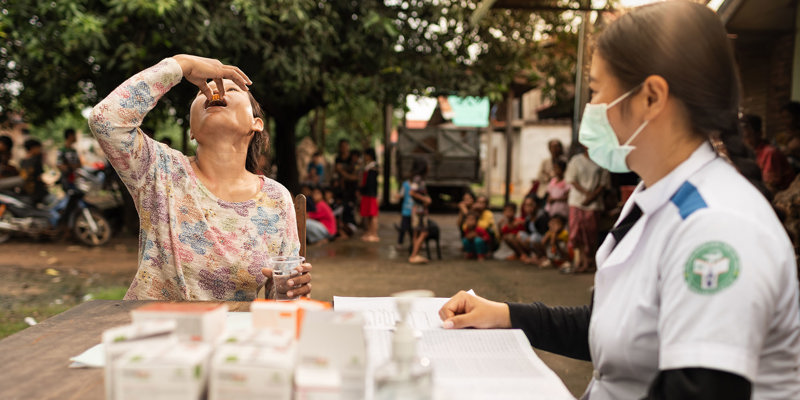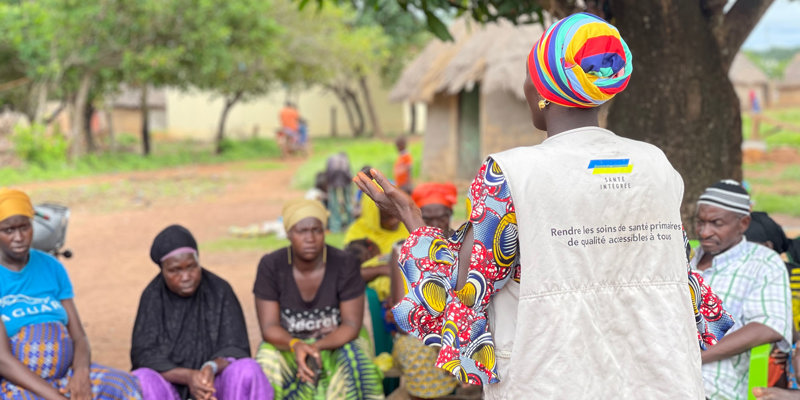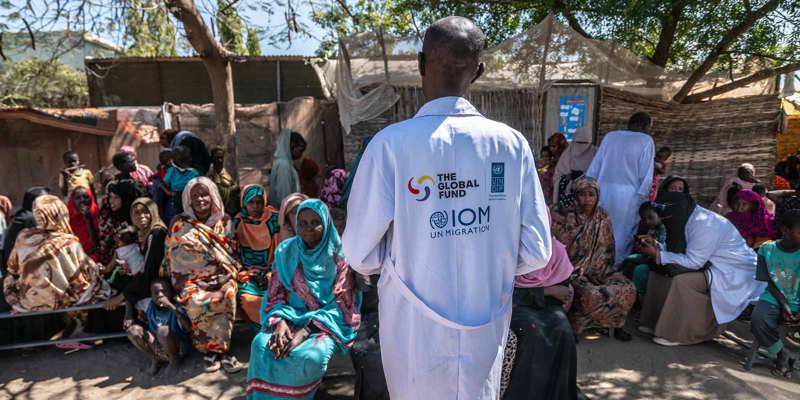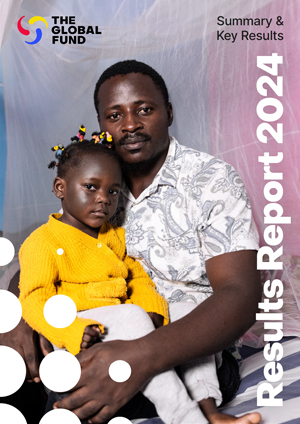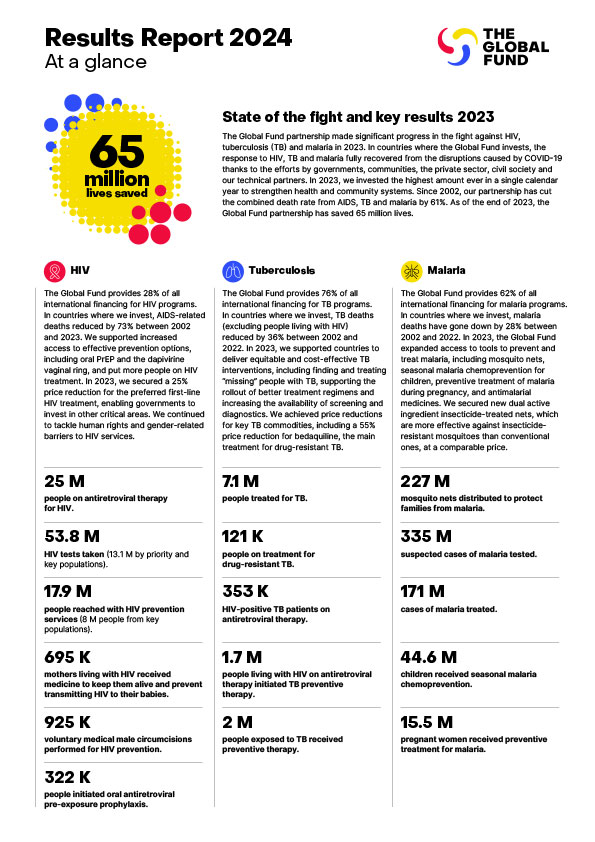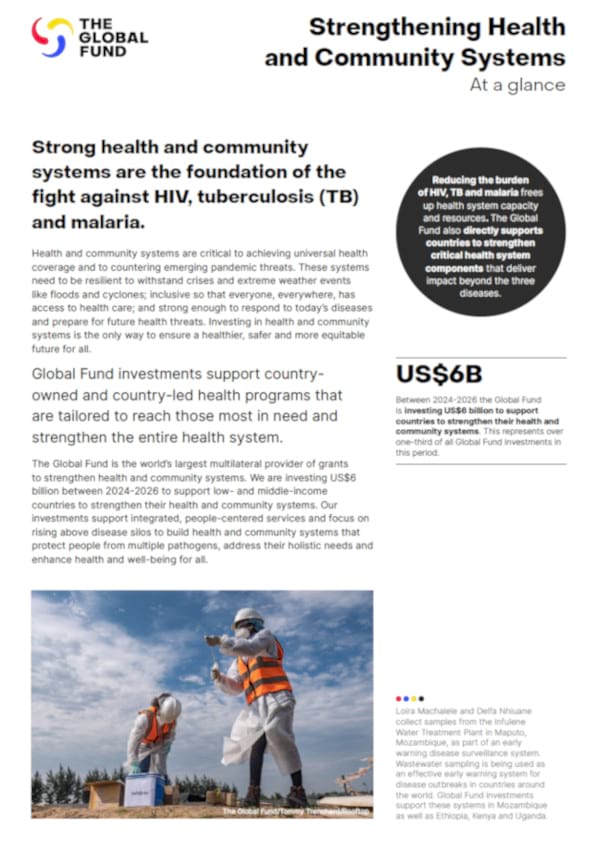COVID-19 Response: Scaling-Up Testing with Antigen-Detection Diagnostics
30 November 2020
Expanding diagnostic testing for COVID-19 is critical for an effective response to the pandemic. While automated polymerase chain reaction (PCR) tests became available early in the pandemic, these tests are laboratory based and can take several hours to days to return a result depending on the available infrastructure and trained personnel. Rapid tests to detect the presence of the virus at the point of care, which are faster and cheaper, are a vital addition to the testing arsenal needed to fight COVID-19, especially in remote communities or areas without advanced laboratory systems.
Following WHO guidance published on 11 September 2020, The Global Fund has made available for procurement two new point-of-care Antigen rapid diagnostic tests (Ag. RDTs) assessed by WHO for Emergency Use Listing (EUL): the SD Biosensor “Standard Q COVID-19 Ag test” and Abbott “Panbio COVID-19 Ag Rapid Test Device”.
While there has been some interest in these two products, many countries are still using Global Fund funding to procure PCR tests only. If countries are to protect the gains achieved through painful lockdowns and bring second waves of COVID-19 under control and prevent future waves, a sustained focus on testing is crucial. To this effect, The Global Fund restates its encouragement to countries to move swiftly and be ready to deploy Ag. RDTs.
Countries should consider their own context when deciding on Ag-RDTs and carefully consult the interim WHO guidance on “appropriate scenarios” and “implementation considerations” for the use of these tests.
The use of Ag-RDTs in the diagnosis of COVID-19 can be supported by Global Fund grants when:
- They are used as recommended in the WHO guidance
- They meet the quality assurance requirements as per the current Global Fund quality assurance policy supplemented by the Interim Quality Assurance Requirements for the Procurement of COVID-19 Diagnostic Products.
The Global Fund will continue to support countries to access WHO-approved Ag-RDTs in three ways, once countries have accepted the use of these tests in their national COVID-19 testing strategies:
1. Through the COVID-19 Response Mechanism (C19RM)
- Countries which have already been awarded funds through C19RM for COVID-19 diagnostics, but have not yet spent the full amount, are encouraged to use the remainder for purchasing high-performing Ag-RDTs and automated PCR tests.
- Countries which are receiving C19RM “top-ups” are also encouraged to use a significant proportion of these funds for Ag-RDTs and automated PCR tests.
- Countries can reprogram current C19RM funding.
- Countries which have not yet submitted funding requests for C19RM are encouraged to incorporate these tests
2. Through grant flexibilities
- Countries which have further scope to use grant flexibilities are encouraged to consider their use for Ag-RDTs.
- Countries should contact their Global Fund Country Team if they have further scope to use grant flexibilities to purchase Ag-RDTs without negative impact on HIV, TB and malaria programming, but have already exceeded the 10% limit across C19RM and grant flexibilities.
3. Using other sources of funding
- Governments and non-governmental organizations in Global Fund-eligible and transitioned countries can also procure SARS-CoV-2 Ag RDTs tests using non-Global Fund sources of funding such as the World Bank or domestic resources. This can be done through wambo.org or other procurement channels.
Principal Recipients not currently participating in the Global Fund’s Pooled Procurement Mechanism should reach out to copying their Country Team.
Ag. RDTs are expected to be readily available from the manufacturers within a few weeks after a purchase order is placed. However the overall lead time to the country will depend on availability of freight routes and how quickly importation approval and waivers are organized by Principal Recipients. Lead times are therefore expected to be range between 1-3 months depending on the freight and approvals. To optimize lead time, we invite Principal Recipients to express their demand early and facilitate the importation approval.
